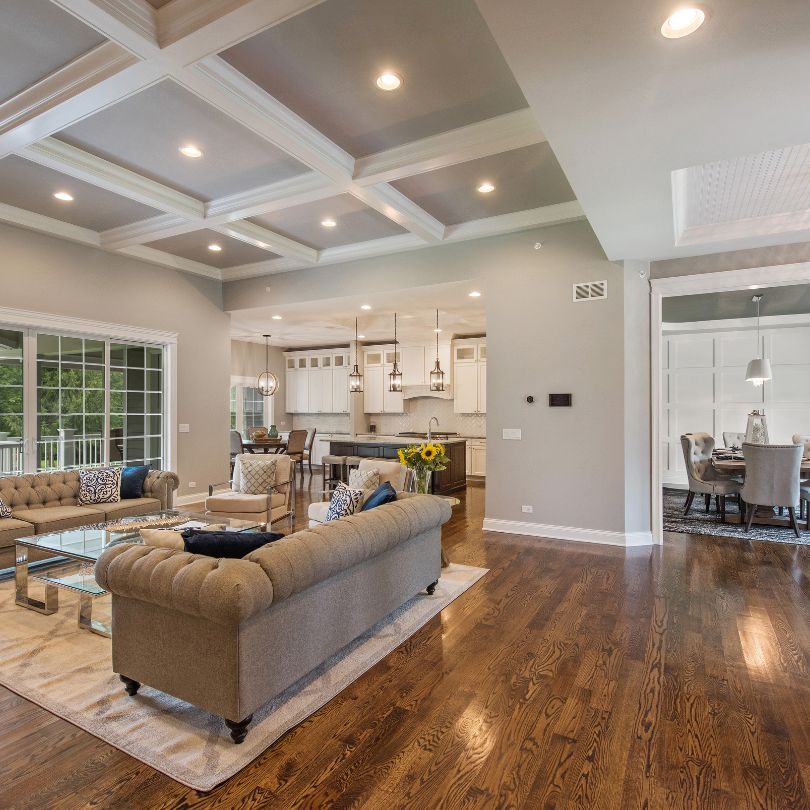
Flooring is a crucial part of any space, and picking the right one involves considering factors like type, color, structure, and width. Once you’ve made your choice, depending on the material, installing the flooring can be a complex and expensive process.
A new type of flooring has recently gained popularity: multilayer flooring, often called floating floors. This innovative flooring method is transforming the way we install floors. Unlike traditional methods requiring nails and glue, floating floors use a more straightforward, efficient technique. They “float” above the subfloor, snapping together without adhesives or fasteners.
Floating floors are designed to be easy to install, saving time and money. They also offer greater flexibility, as they can expand and shrink with changes in temperature and humidity without affecting the overall installation. This method makes them a practical choice for many homeowners looking for a hassle-free, durable flooring option.
Today, we’ll explore what floating floors are, how they work, and why they’re becoming a top choice for so many people.
What Are Floating Floors?
As the name suggests, floating floors are designed to “float” above the subfloor or existing flooring. It means they don’t need to be attached directly to the base layer. Instead, they rest on top of it, creating a smooth and stable surface. This approach can also be used when the old flooring and subflooring can’t be removed.
This method represents a significant shift in the flooring industry. Traditionally, floors were installed by either nailing them down to the subfloor or gluing them in place. Both methods can be time-consuming and costly. Floating floors offer a more efficient alternative, simplifying installation and saving time and money.
So, How Does This Work?
Floating floors work through a clever design involving multiple layers. The core or backing layer gives the floor strength and stability, while the top layer gives the look, color, and finish. This construction is similar to engineered wood floors but offers additional benefits.
Key features of floating floors include their waterproof nature, rigidity, thickness, and dimensional stability. These characteristics make installation easier and faster, with minimal preparation needed for the subfloor, providing a sense of ease. Floating floors can be installed on any level and in most areas, including those with moderate sunlight and heat, often without the need for transition moldings.
Additionally, floating floors feature a unique design element. They use an advanced interlocking mechanism similar to the tongue-and-groove system found in solid hardwood floors. This system ensures that the flooring pieces fit together perfectly, eliminating the need for glue or nails and simplifying the installation process.
Why Is Floating Flooring So Popular Today?
Floating flooring has become a favorite among homeowners and professionals alike for several reasons:
- There is no need for a Subfloor:
Floating floors can be installed directly over existing surfaces, saving time and reducing costs.
- Versatile Installation:
Unlike traditional solid flooring, it can be installed at, above, or below ground level.
- Affordable:
Floating floors are often less expensive than traditional options like tile or solid hardwood.
- DIY Friendly:
They are easy to install, making them an excellent choice for do-it-yourself projects.
- Portable:
If you move, you can take the flooring with you, which isn’t possible with glued or nailed-down options.
- Added Features:
Many floating floors come with built-in sound dampening, Microban® anti-mold and mildew treatments, and meet environmental standards like CARB2, LEED, and FSC.
- Warranties:
They often come with residential and commercial warranties.
- Durable and Low Maintenance:
The finishes are high quality, resilient, and easy to care for.
However, remember that some features might be specific to certain brands, so it’s essential to research and choose a floor that meets your needs for quality and value.
Another reason floating floors are popular is the wide variety available today. What was once limited to a few styles has expanded significantly. Advances in manufacturing now offer floating floors in many styles and colors, including wide plank leather, engineered wood, luxury vinyl plank, cork, and wide plank laminate.
